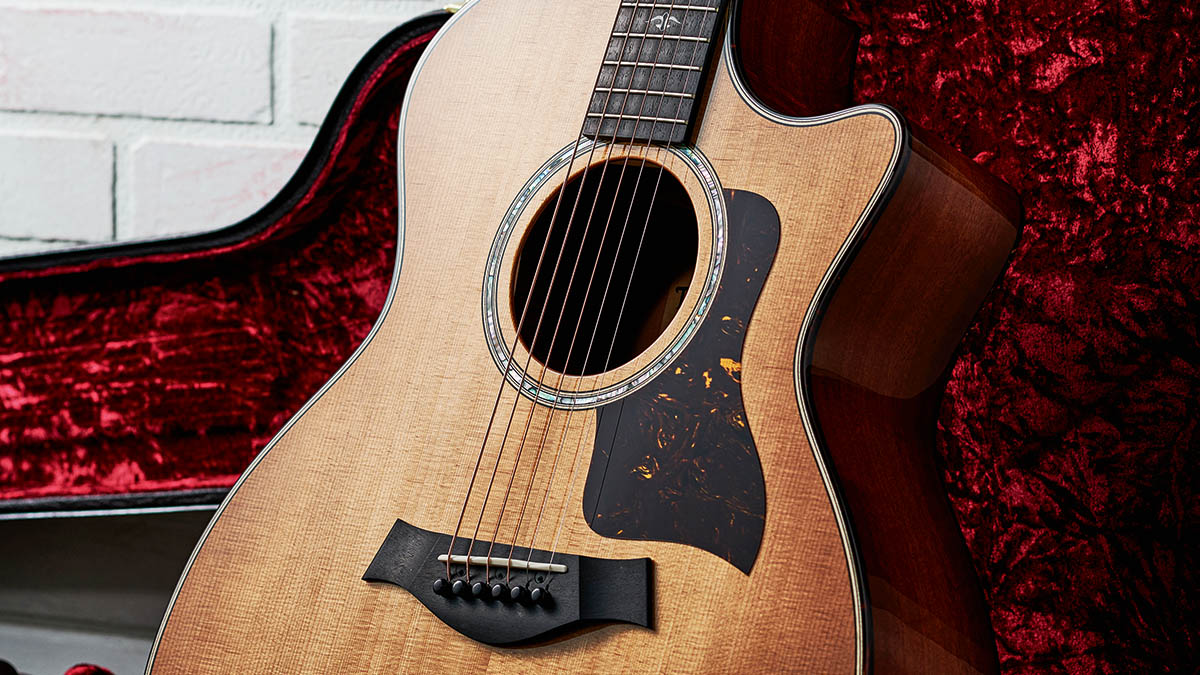Guitar World Verdict
That it works so well as a sofa companion, a strummer in the band, or picking out sensitive ballads at the open mic night, is the result of great design and commitment. And if a guitar can be ‘ethically’ built then this one does its best. A very fine instrument.
Pros
- +
Taylor’s flawless build.
- +
Superb playability.
- +
A range of totally convincing sounds.
Cons
- -
Though compatible with its competitors, it’s a tad expensive.
You can trust Guitar World
There surely isn’t another large guitar manufacturer that does more to look after the environment than Taylor, in either discovering new timber species for guitar building, or conserving stocks of rare ones.
Witness its careful management of koa in Hawaii, the conservation of Crelicam ebony in Cameroon, and the discovery of ‘urban’ woods from within the cities of California, such as urban ash, and this new one on us, urban ironbark.
Many Californian cities feature wide tree-lined boulevards, and when it’s time to replace them due to age, safety or other issues, Taylor rescues this otherwise waste timber and puts it to the best possible use – building beautiful high-end acoustic guitars.
Since Andy Powers has taken up the helm at Taylor, we’ve been highly impressed by the instruments that have been coming out of the San Diego facility. The Taylor tone has also come of age lately, with different models delivering a variety of interesting sounds somewhat removed from the pleasing but fairly bland tone often previously exhibited.
This is largely down to Powers, who has redesigned the guitars’ innards utilising innovative bracing patterns. He’s also worked hard on sourcing new and viable woods, such as the urban ironbark (red ironbark) you see on this rather attractive 514ce.
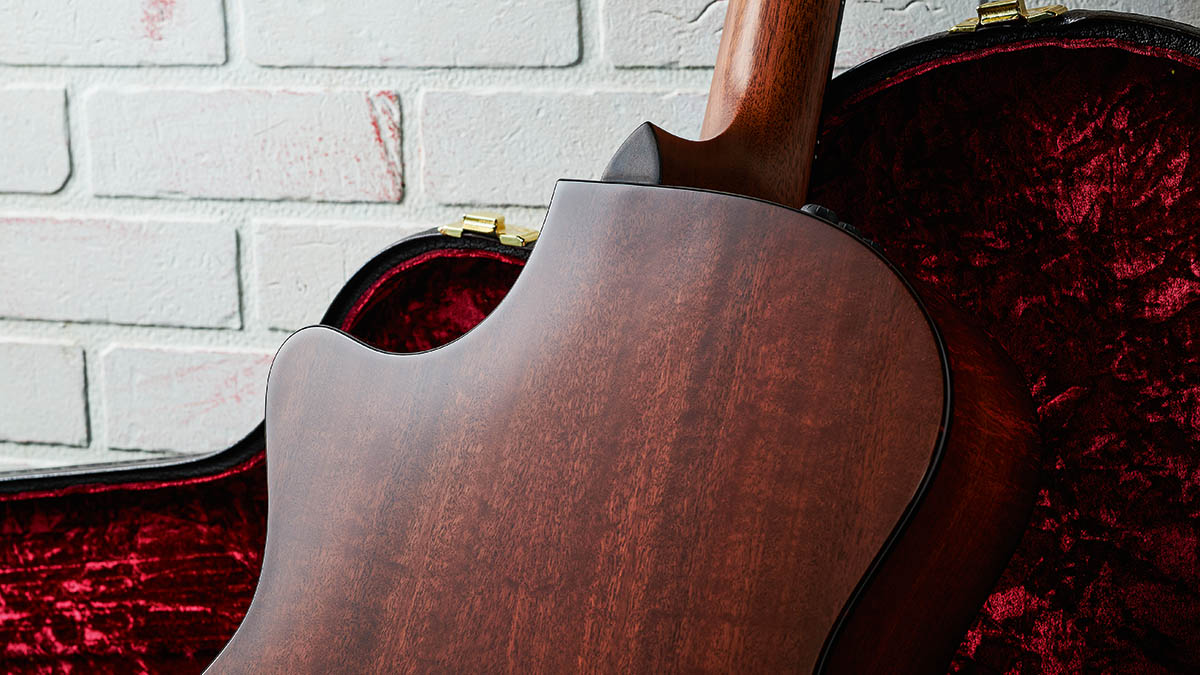
Ironbark’s grain looks not a million miles away from mahogany but is not a related species (originally Australian, it’s actually from the eucalyptus family). Said to sound somewhat akin to East Indian rosewood “but more so”, and exhibiting the hardness of ebony (it sinks like ebony does, too), it’s a great guitar-building find for Taylor.
Here, the straight-grained Sitka spruce top has been torrefied in order to open it up for a more played-in tone, while both fingerboard and bridge are Crelicam ebony, from Taylor’s forestry partnership with Madinter in Cameroon, West Africa.
This facility fells and processes the lumber on site, thus providing valuable employment for the local population, as well as harvesting this rare and valuable timber as sustainably as possible.
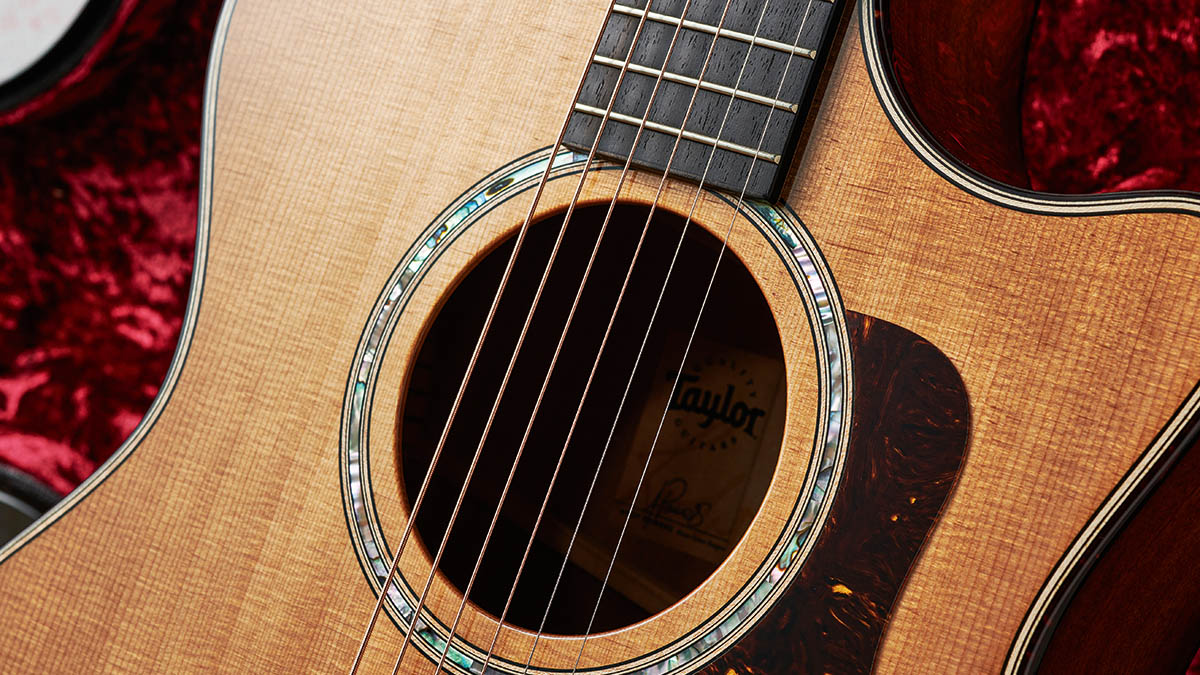
The neck is hewn from what Taylor calls neo-tropical mahogany, which we gather is grown in South America and, again, environmentally sourced. A scarfed-on headstock not only saves material but also creates a stronger build since the grain follows the headstock’s pitched back angle, and doesn’t run straight through the neck’s weakest part, right behind the nut. Tuners are classy Schallers with Taylor branding, and the pickup is the company’s excellent Expression 2 system.
As we’d have expected, having reviewed many Taylors over the years, build quality, both internally and externally, is utterly flawless. Kerfing and bracing (the guitar features Andy Powers’ V-Class bracing) are clean as a whistle, while the thin-skin finish is gloss on the body and matt on the neck. And while not quite sure at first, we’ve really grown to like the top’s subtle tobacco stain ‘edge burst’, too.
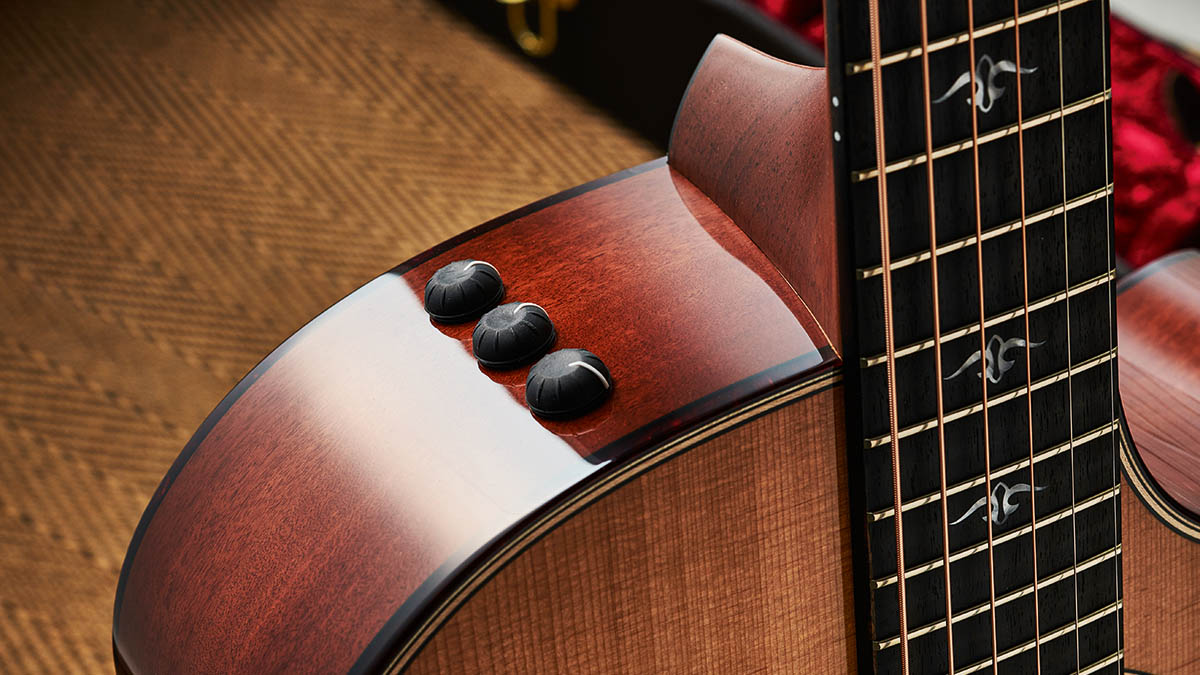
Feel & Sounds
Great playability has always been at the core of Taylor’s proposition. Right from the earliest days the guitars were said to be acoustics that played like electrics. With our 514ce’s Elixir Nanoweb 12-gauge phosphor bronzes that’s clearly still what Taylor is aiming for.
While not quite sure at first, we’ve really grown to like the top’s subtle tobacco stain ‘edge burst’ finish
Featuring the company’s standard carve, which manifests as a C shape with a slight V along the centre, the neck is incredibly comfortable to play. With a 44.45mm black Tusq nut and a 648mm (25.5-inch) scale length, it’s a joy to fingerpick open chords and licks, while single-note lines drip off the fingers higher up the ebony expanse.
Access to the upper frets – there are 20 in total – is afforded courtesy the delicate Venetian cutaway, and if Taylor’s idea is to make the guitar’s playability the last thing on your mind, then they’ve succeeded here in spades.
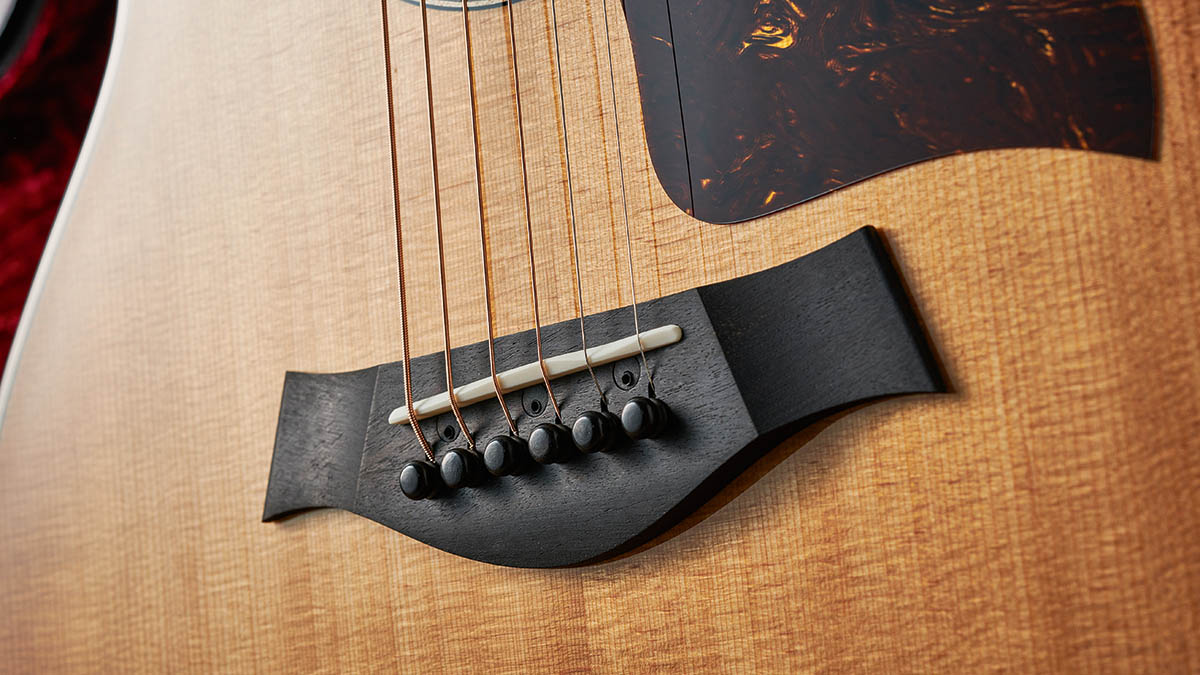
Taylor says that sonically the guitar “delivers a sweet, muscular sound that combines rosewood’s high-fidelity voice with mahogany’s warm and punchy midrange and spectrum-wide sonic balance”. And one has to say, that’s pretty much bang on. With a rosewood-bodied Martin D-28 and a mahogany Gibson Hummingbird as comparators, the Taylor holds its own proudly.
Where the big Martin has an overall thicker and more punchy tone than the sweeter-sounding Gibson, the 514ce includes both of these traits in its DNA. Taylor says it’s equally at home plucking delicate pieces as it is bashing out songs all night. Indeed it is, whereas our Martin is a fantastic picker and the Gibson definitely more of a strummer.
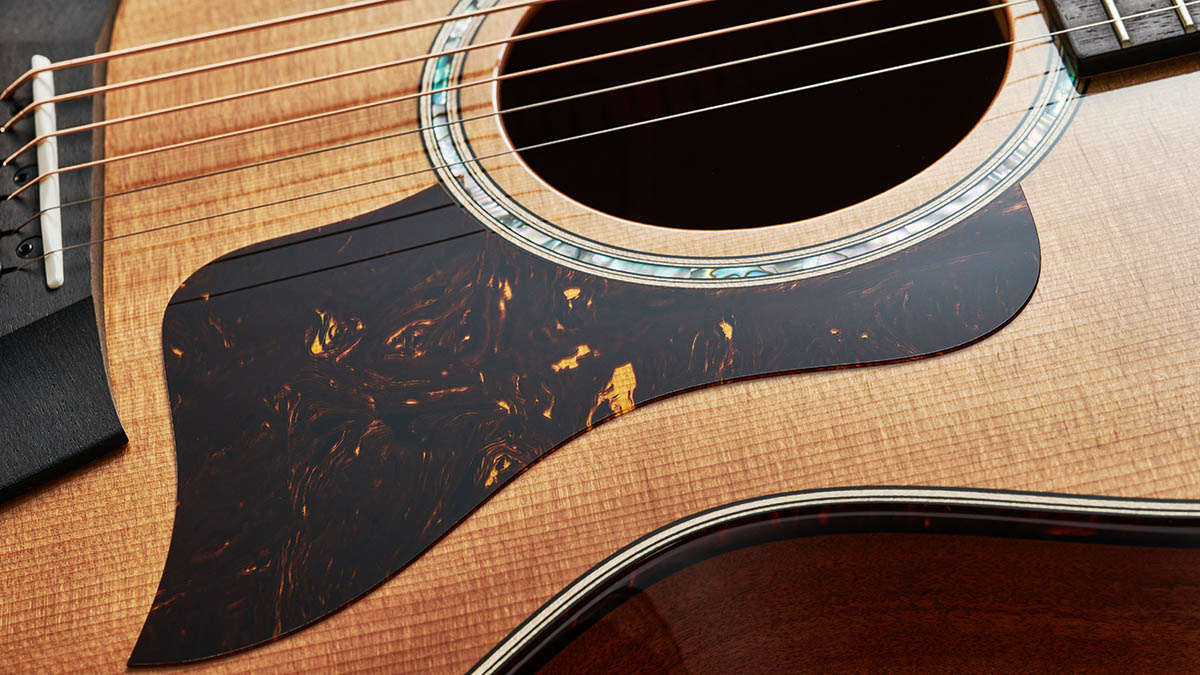
What’s particularly pleasing is the Taylor’s superb string-to-string balance, and equally defined upper, mid and bass registers.
Being the company’s big-selling Grand Auditorium size, which is pitched somewhere between the larger dreadnought and smaller 000 or Grand Concert models, the 514ce doesn’t quite have the cannon-like roar of the D-28, but it definitely kicks out a decent punch acoustically. It would certainly hold its own in any acoustic ensemble.
Plugged in, the Expression System 2 delivers a pretty faithful representation of the guitar’s voice. It’s neutral sounding, with no obvious piezo ‘quack’ due to the pickup’s mounting behind the bridge and not directly under the saddle. It’s a well tried-and-tested system.
Verdict
Price-wise, the 514ce is on a par with Martin’s Reimagined series, and while we feel both are a little expensive, it’s what you pay for quality these days.
But Taylor is definitely striking while the iron is hot, with tons of new models, all of which bring something new to the table, whether that’s innovative bracing, an alternative timber, or even a whole new range as with the American Dream series (the company’s lowest price, US-made, all-solid timber range, as reviewed back in 2020).
The torrefied spruce top gives it a ‘lived-in’ sound so there’s no feeling that it requires breaking in
There are so many great acoustics around at the moment that every manufacturer has to be on its toes. Taylor most certainly is, as this excellent guitar goes to show. Beautifully built, it plays like butter and sounds strong, balanced and poised.
The torrefied spruce top gives it a ‘lived-in’ sound so there’s no feeling that it requires breaking in. And the little things, like an easy access battery compartment by the endpin, and the second strap button fitted to the heel, make it stage-ready from the off.
Specs
- PRICE: $3,299 / £3,659 (inc hard case)
- ORIGIN: USA
- TYPE: Cutaway Grand Auditorium electro-acoustic
- TOP: Torrefied Sitka spruce
- BACK/SIDES: Solid urban ironbark (red ironbark)
- MAX RIM DEPTH: 111.125mm
- MAX BODY DEPTH: 381mm
- NECK: Neo-tropical, South American mahogany
- SCALE LENGTH: 648mm (25.5”)
- TUNER: Taylor branded Schaller
- NUT/WIDTH: Black Tusq/ 44.45mm
- FINGERBOARD: Crelicam ebony with Italian pearloid inlays and ebony binding
- FRETS: 20, medium-fine
- BRIDGE/SPACING: Crelicam ebony with white micarta saddle 55.5mm
- ELECTRICS: Taylor Expression System 2 (ES2)
- WEIGHT (kg/lb): 2.12/4.6
- OPTIONS: N/A
- RANGE OPTIONS: Taylor 512ce Grand Concert (£3,049)
- LEFT-HANDERS: Yes
- FINISH: Gloss tobacco stain edge burst top, natural satin neck – thin skin gloss back and sides
- CONTACT: Taylor Guitars
In the late '70s and early '80s Neville worked for Selmer/Norlin as one of Gibson's UK guitar repairers, before joining CBS/Fender in the same role. He then moved to the fledgling Guitarist magazine as staff writer, rising to editor in 1986. He remained editor for 14 years before launching and editing Guitar Techniques magazine. Although now semi-retired he still works for both magazines. Neville has been a member of Marty Wilde's 'Wildcats' since 1983, and recorded his own album, The Blues Headlines, in 2019.
“While the odd corner has clearly been cut, these are true Gibsons with all the individuality that this brand exhibits”: Gibson J-45 Special and Hummingbird Special review
“Fender has stripped back the price – but has it gone too far paring back the sounds, too?” Fender Standard Acoustasonic Telecaster review
